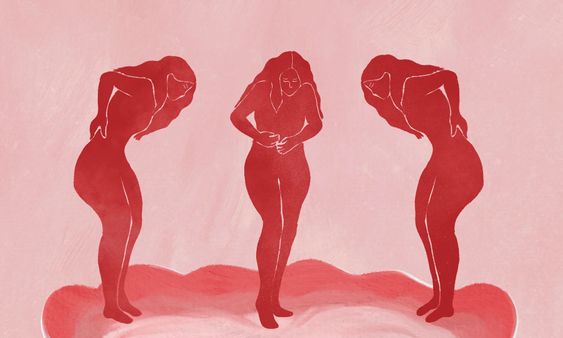Living with Endometriosis
Introduction
Endometriosis is a chronic condition that affects millions of women worldwide. It occurs when tissue similar to the lining of the uterus (the endometrium) grows outside of the uterus, most commonly in the pelvic area. This tissue behaves like the lining of the uterus, thickening, breaking down, and bleeding during each menstrual cycle. However, unlike the menstrual blood, the blood and tissue shed from endometrial growths have nowhere to go, leading to inflammation, pain, and other complications.

The symptoms of endometriosis can vary from woman to woman, but the most common symptom is pelvic pain. This pain can be debilitating and may worsen during menstruation, intercourse, bowel movements, or urination. Other common symptoms include heavy or irregular periods, fatigue, infertility, and digestive problems.
Living with endometriosis can be challenging, both physically and emotionally. The unpredictable nature of the condition and the impact it can have on daily life, relationships, and fertility can take a toll on a woman's well-being. However, with the right support, information, and treatment plan, women with endometriosis can manage their symptoms, improve their quality of life, and live full and active lives.
Understanding Endometriosis
While the exact cause of endometriosis is unknown, several factors are believed to contribute to its development, including:
- Retrograde menstruation: This occurs when menstrual blood flows backward through the fallopian tubes and into the pelvic cavity, carrying endometrial cells with it.
- Genetics: Endometriosis tends to run in families, suggesting a genetic predisposition.
- Immune system dysfunction: A compromised immune system may fail to recognize and destroy endometrial-like tissue growing outside the uterus.
- Environmental factors: Exposure to certain environmental toxins has been linked to an increased risk of endometriosis.
Managing Endometriosis
There is no cure for endometriosis, but there are various treatment options available to manage the symptoms and improve quality of life. The most appropriate treatment plan will depend on the severity of symptoms, the woman's age and reproductive goals, and other individual factors. Treatment options include:
- Pain medication: Over-the-counter pain relievers like ibuprofen or naproxen can help manage mild pain, while stronger prescription pain medications may be necessary for more severe pain.
- Hormone therapy: Hormonal contraceptives, such as birth control pills, patches, or rings, can help regulate hormone levels and reduce endometrial tissue growth.
- Surgery: In some cases, surgery may be recommended to remove endometrial growths or scar tissue. This can be done laparoscopically or through a larger incision.
- Lifestyle modifications: While not a cure, lifestyle changes can significantly impact managing symptoms. This includes maintaining a healthy weight, eating a balanced diet, engaging in regular exercise, and managing stress through techniques like yoga or meditation.
Seeking Support
Living with endometriosis can be emotionally challenging. It is important to remember that you are not alone. There are many support groups and online communities where you can connect with others who understand what you are going through. Talking to a therapist or counselor can also provide emotional support and coping strategies.

.jpg)